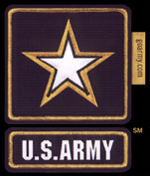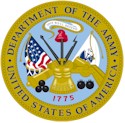|
|
Donald Tenneyson Wright ARMY MARS 28 Feb 1905 - Nov 1981
|
|
|
W7HH W0HH |
||
|
I do not know many amateur radio operators, “hams,” now, but I did. I believe my father, Donald T. Wright (1905-1981), was one of the best. He held his first license in the early part of the last century, signed by Herbert Hoover when he was Secretary of Commerce. Dad was always active in MARS. He served in the Army Air Corps as a radio officer prior to WWII. He was the radio officer for COL Tinker (Tinker AFB, OK) flying Martin B-10s, the competitor and loser to Boeing’s B-17 vying for the army’s heavy bomber contract in the 1930s. He also taught Morse code to young Signal Corps operators at the Presideo in San Francisco. Dad operated in Montana (several towns, but the last was Ulm) during the war, and I have a MARS gram sent to him by my uncle, Grady Q. Veale, from the Philippine Islands announcing his safe arrival in November of 1941. My middle name is Grady. I was given this in his honor as he died during the Bataan March in 1942. Dad also operated in Portland, OR (1950-1957), which is where I remember seeing his “ham shack” the first time. I was born in 1946. Having obtained his ticket in that region (7), his call was W7HH. He was very proud of that two letter call, and was an advanced class license holder. In 1957 we moved to Laramie, WY. He had a heart attack while working TDY in Los Angeles in 1959, and took a disability retirement from the CAA/FAA. He became more active as an amateur with the time available to him, and I remember him working hours handling “traffic.” He was mostly a 40 and 80 meter operator, and belonged to several “nets.” I remember that he was usually in the top five for traffic count in his nets, as reported in QST magazine. How much of the traffic was MARS messages I don’t know, but I do recall him sending messages he had typed on his “Mill,” an all CAPS typewriter, or making phone calls relaying those messages. He could “copy” code at some pretty incredible speeds, actually faster than 50-60 wpm teletypes. He used a “bug,” or Vibroplex key, switching to an electronic key later in Missouri. He was always known for his clean signal, which he attributed to his attention to antenna design and maintenance. Most of his antennas were homemade inverted dipoles, center fed. He did have a whip, probably for 20 meter work, and also a long wire elevated from some fence posts for 160 meter band. I had my novice, KN7NDR, when I was thirteen, but never followed up. I enjoyed going to several “Hamfests” with him. Eyeball QSOs. Dad volunteered and spent a year with the hospital ship “HOPE,” at Conakry, Guinea, Africa. He said his call, HH, fit so well with Hospital Hope that when he left there and my parents moved to Missouri in 1966, he left his W7HH call. He became W0HH, living in the region, at Lamar. He became active in the Barton County radio club, and didn’t take long to establish his shack and antennas. Dad had many pieces of equipment, much of it adapted military surplus, then several different Heathkits. In Laramie his prized piece was a Collins linear amplifier, giving him an honest 1000 watts AM, 2000 PtP Sideband, the maximum allowable by law. I don’t think he used the amplifier for his CW work. In Missouri, he had Drake equipment, and when he was finally tired and so hard of hearing that he closed his shack, that equipment went to the Barton County club. |
||

